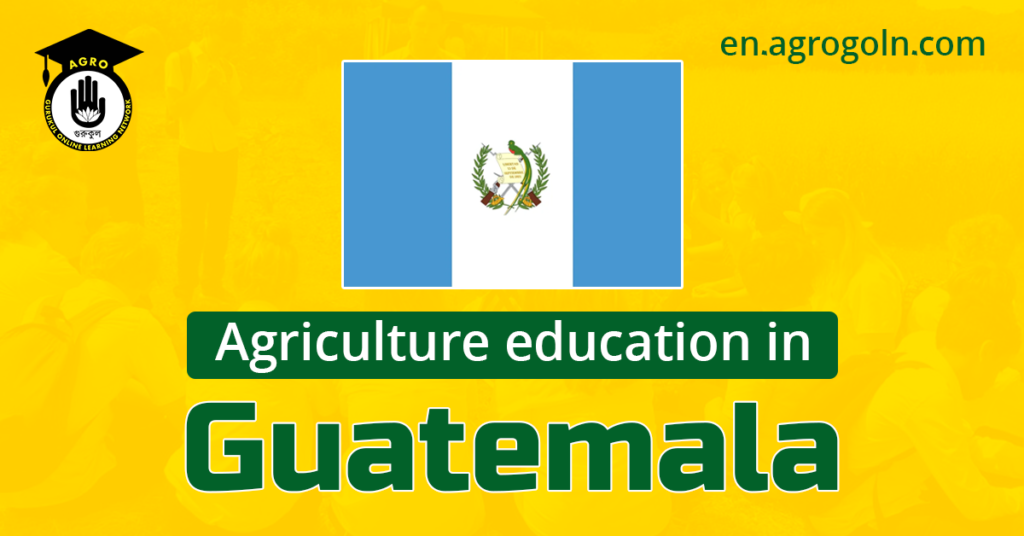Guatemala, a country rich in history, culture, and natural resources, has agriculture deeply woven into its socio-economic fabric. With more than a third of its population actively engaged in agricultural activities, the nation possesses a mosaic of diverse farming practices – from traditional maize cultivation to innovative agroforestry systems. In this context, agricultural education plays a pivotal role in the transformation and advancement of Guatemala’s agricultural sector, contributing to food security, environmental sustainability, and economic growth.
Agricultural Education in Guatemala
Historical Background
Agricultural practices in Guatemala trace back to ancient Mayan civilization, which thrived on an advanced agricultural system primarily based on the cultivation of maize, beans, and squash. The Mayans developed terracing methods, water management, and even early agroforestry practices that are studied and revered even today.
However, post-colonial periods saw an increasing disparity in land ownership and agricultural practices. Large landholdings, called “fincas,” were predominantly involved in monoculture plantation agriculture, focusing on crops like coffee, bananas, and sugar, mainly for export. Meanwhile, smallholder farmers continued with traditional multi-cropping systems. This dichotomy also impacted the way agricultural education evolved, with larger farms leaning towards more modern, export-driven agricultural practices and smallholders rooted in ancestral and traditional knowledge.
Formal Agricultural Education
The need for structured agricultural education began to be recognized in the late 19th and early 20th centuries. Schools and colleges focusing on agronomy and agricultural sciences were established, and they initially catered to the needs of the larger farms and export-oriented agriculture.
Institutions like the University of San Carlos in Guatemala City began offering advanced degrees in agricultural sciences. These institutions aimed to introduce modern farming techniques, better crop varieties, and improved livestock breeds, aligning the country’s agricultural practices with global standards. Their curricula also touched upon agro-industrial processes, ensuring that students understood the entire agricultural value chain.
Role of NGOs and International Bodies
The later part of the 20th century saw the active involvement of non-governmental organizations (NGOs) and international bodies like the Food and Agriculture Organization (FAO) in promoting agricultural education at the grassroots level. They played a significant role in filling the knowledge gaps in rural and underserved areas, bringing about a blend of traditional wisdom with scientific advancements.
NGOs initiated various training programs, workshops, and demonstration farms to impart practical knowledge. The emphasis was on sustainable and organic farming practices, integrated pest management, soil conservation, and water management. These efforts were aimed at enhancing crop yield, reducing post-harvest losses, and increasing the overall efficiency of smallholder farms.
Indigenous Knowledge and Bio-Cultural Heritage
Guatemala, home to 23 officially recognized indigenous groups, is a repository of rich bio-cultural heritage. Indigenous communities have, over the centuries, developed a deep understanding of the local ecology, climatic patterns, and sustainable agricultural practices. Recognizing the value of this traditional knowledge, newer educational initiatives have aimed at integrating them into formal and informal agricultural training programs.
In essence, the goal is to strike a balance – harnessing the strengths of indigenous practices, which are sustainable and adapted to local conditions, with modern scientific knowledge. This integration has not only led to better farming outcomes but has also helped preserve the rich cultural heritage of indigenous communities.
Challenges in Agricultural Education
While there have been significant advancements, agricultural education in Guatemala still faces challenges:
- Access to Education: Rural areas, especially those with predominant indigenous populations, often lack easy access to formal educational institutions. This leads to a knowledge gap that affects agricultural productivity and sustainability.
- Gender Disparities: Traditionally, agricultural education was male-dominated. Although the scenario is changing, more efforts are needed to encourage female participation, especially considering the crucial role women play in rural agriculture.
- Keeping Pace with Global Advancements: Rapid advancements in agricultural technology and practices worldwide mean that the curriculum and training methods need constant updating. This is a challenge, especially for institutions with limited resources.
- Land Rights and Tenure: The long-standing issue of land rights in Guatemala has implications for agricultural education. Without secure land tenure, farmers might be hesitant to invest in new knowledge or practices, fearing the loss of land.
The Way Forward
- Blended Learning Approaches: Combining traditional classroom learning with online modules can help overcome the accessibility issue, reaching remote farmers.
- Focus on Women and Youth: Tailored programs catering to the needs and challenges faced by women and the younger generation can ensure their active participation in farming.
- Collaborative Efforts: Collaboration between governmental agencies, NGOs, international bodies, and local communities can lead to a more comprehensive and holistic approach to agricultural education.
- Promotion of Agripreneurship: Beyond traditional farming, there’s a need to promote agripreneurship, guiding the younger generation towards innovative and sustainable agri-business models.
In conclusion, agricultural education in Guatemala has a rich heritage and plays an essential role in the nation’s socio-economic structure. While there are challenges, with collaborative and inclusive efforts, the country is well poised to harness its agricultural potential, ensuring food security, sustainability, and economic prosperity for its people.
See more:

